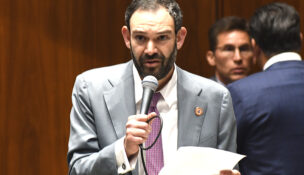Tapping inmates’ wages
Arizona Capitol Reports Staff//April 20, 2007//[read_meter]
80 cents an hour Angela Carleno, 37, delivers papers to her desk at the customer service department in the Arizona Correctional Industries offices in west Phoenix. Carleno, imprisoned for a...
No tags for this post.

















